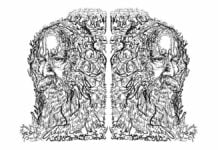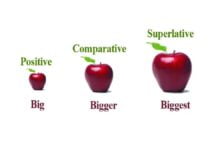Theories of meaning in linguistics seek to explain how words, phrases, and sentences convey sense, reference, and understanding. Semantics, the branch of linguistics that studies meaning, examines how linguistic expressions relate to each other and to the real world.
Among the many ways in which meaning operates, certain key relationships between words are central — including hyponymy, metonymy, synonymy, antonymy, entailment, prototype, ambiguity, and polysemy. These relationships show how vocabulary and interpretation function within the structure of a language.
Hyponymy
Hyponymy is the semantic relationship between a general term (superordinate) and a more specific term (hyponym) that falls under it. The hyponym shares all the features of the superordinate term but adds something extra that makes it more specific.
- Rose, lily, and tulip are hyponyms of flower.
- Dog is a hyponym of animal.
- Apple is a hyponym of fruit.
If A is a hyponym of B, the meaning of B is included in A. This is sometimes called an “is-a” relationship: a rose is a flower; a dog is an animal.
Hyponymy helps structure the lexicon hierarchically, showing how general and specific meanings are related — like a semantic tree or taxonomy. It is essential in dictionary organisation and language learning.
Metonymy
Metonymy is a figure of speech and semantic relation in which one word or phrase is used to represent another that is closely associated with it, based on proximity or connection rather than resemblance.
- “The White House announced…” → White House stands for the U.S. government or President.
- “He drank the whole bottle.” → Bottle refers to the liquid inside it.
Metonymy operates on the principle of association, not similarity (which distinguishes it from metaphor). The relationship may be between cause and effect, container and content, or institution and person.
Metonymy reflects how language economy works — we use one familiar or salient element to stand for a complex concept. It also contributes to idiomatic expressions and lexical expansion.
Synonymy
Synonymy refers to the relationship between words that have the same or nearly the same meaning. Such words are called synonyms.
- Begin / start
- Big / large
- End / finish
True synonymy is rare because even words that seem identical often differ slightly in connotation, register, or context. For instance, childish and childlike both relate to a child, but the former carries a negative tone, the latter a positive one.
Types of Synonymy
- Absolute Synonyms: Perfectly interchangeable in all contexts (very rare).
- Partial Synonyms: Similar in core meaning but differ in usage or tone (most common).
Synonymy enriches vocabulary and stylistic variety, allowing writers to choose words that best suit context, tone, and emotion.
Antonymy
Antonymy is the relationship between words that have opposite or contrasting meanings. Words that express opposite ideas are called antonyms.
- Hot / cold
- Love / hate
- Up / down
Types of Antonyms
- Gradable Antonyms – Represent opposite ends of a scale; there are degrees between them.
E.g., hot–cold, tall–short. - Complementary Antonyms – Mutually exclusive; the presence of one excludes the other.
E.g., alive–dead, male–female. - Relational (or Conversive) Antonyms – Express a reciprocal relationship.
E.g., buy–sell, parent–child, give–receive.
Antonymy helps define meaning through contrast, allowing speakers to describe differences and polarities clearly.
Entailment
Entailment is a logical relationship between two statements or propositions in which the truth of one guarantees the truth of the other.
- Sentence A: John killed the snake.
- Sentence B: The snake is dead.
Here, A entails B — if A is true, B must also be true. However, the reverse is not necessarily true (B does not entail A).
Entailment deals with meaning at the level of sentences rather than individual words. It shows how language reflects logical dependency between ideas.
Other Examples:
- Mary bought a car. ⇒ Mary bought something.
- He is a bachelor. ⇒ He is unmarried.
Entailment helps understand the logic of natural language and how information is inferred or presupposed. It’s a cornerstone concept in semantics, pragmatics, and discourse analysis.
Prototype
The Prototype theory, introduced by cognitive linguist Eleanor Rosch, suggests that categories in language are organised around typical or central examples, rather than fixed boundaries.
- In the category bird, a sparrow or robin is a prototype, while penguin or ostrich are less typical members.
- In the category furniture, chair and table are prototypes; lamp is less central.
According to this view, meaning is graded — some members of a category are more representative than others. This opposes the traditional view that categories have strict definitions.
Prototype theory shows that meaning and categorisation are shaped by human cognition, experience, and perception, not just by logical rules. It explains why we intuitively classify things even without strict definitions.
Ambiguity
Ambiguity occurs when a word, phrase, or sentence has two or more possible meanings, and it is unclear which one is intended.
Types of Ambiguity
- Lexical Ambiguity – A single word has multiple meanings.
E.g., bank (riverbank or financial institution). - Structural (Syntactic) Ambiguity – Sentence structure allows more than one interpretation.
E.g., “Old men and women” could mean old men and all women or old men and old women.
Ambiguity may cause confusion or, in literature, deliberate playfulness (as seen in puns). It highlights the flexibility and complexity of language.
Example in context:
“Visiting relatives can be boring.” → Are the relatives visiting, or is someone visiting the relatives?
Polysemy
Polysemy refers to a single word having multiple related meanings. Unlike homonymy (where meanings are unrelated), polysemous words have meanings that are connected through metaphorical or functional extension.
- Head → part of the body, leader of a department, or top of an object.
- Foot → part of the body, base of a mountain, or bottom of a page.
Polysemy arises from semantic extension, where one word develops several meanings through association or metaphor. For example, head originally meant the anatomical part but extended to mean chief because of its metaphorical link with leadership and control.
Polysemy makes language rich and efficient, allowing one word to serve multiple functions without the need for new vocabulary. It also poses challenges in interpretation, especially in translation and language processing.
| Term | Definition | Example |
| Hyponymy | Relation where specific words fall under a general term. | Rose → Flower |
| Metonymy | Substitution based on close association. | The crown → The king or monarchy |
| Synonymy | Words with the same or similar meaning. | Big / large |
| Antonymy | Words with opposite meanings. | Hot / cold |
| Entailment | Truth of one statement guarantees another. | He was murdered ⇒ He is dead |
| Prototype | Typical or central example of a category. | Sparrow as prototype of bird |
| Ambiguity | Word or phrase with multiple possible meanings. | Bank (money or river) |
| Polysemy | One word with several related meanings. | Head (body part, leader, top) |
Theories of meaning show that language is not a static system of labels but a dynamic network of relationships, associations, and inferences.
- Hyponymy, synonymy, antonymy, and metonymy explain how words relate to one another.
- Entailment connects meanings at the sentence level through logic.
- Prototype theory reveals how human cognition shapes categories.
- Ambiguity and polysemy highlight the flexibility and richness of language, reminding us that meaning often depends on context, intention, and shared understanding.
Together, these theories deepen our understanding of how meaning functions in human communication, literature, and thought.


























